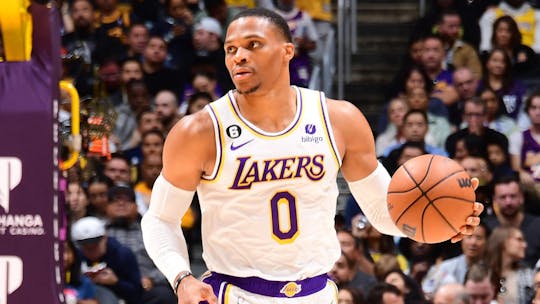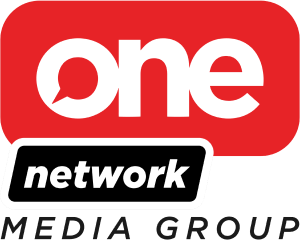Watching the Los Angeles Lakers for fun this season has been like watching Manchester by the Sea for a date night. Sure, there's some entertainment to be derived from both experiences, but it's the kind that gnaws at your soul. Watching LeBron James, the best player of our generation, constantly forced to kick out to below 30 percent 3-point shooters is like watching that scene of Casey Affleck imploding in the police station. It's riveting and also quite depressing.
The main source of Lakers’ fans existential dread this season, perhaps even since last season, has been Russell Westbrook. The former MVP is currently shooting 34.3 percent from the field and 20.0 percent from deep. The sound of him clanking wide open 3-pointers and even his signature pull-up midrange jumper has been the perfect score for the Lakers’ 1-5 start.
There’s obviously something wrong with the entire situation, not just with Westbrook. The Lakers knew what they were getting when they traded draft picks and serviceable role players for the magnetic star. But Westbrook is now 34 years old, entering his 15th year in the league. His superpowers have diminished, but his ego and eagerness to shoulder a franchise have not.
What’s next for Westbrook? Perhaps he can learn from a couple of former teammates and friends.
Melo Down
Carmelo Anthony was still a decent scorer when he was traded to the Oklahoma City Thunder in the summer of 2017. He was still an All-Star the season prior with the New York Knicks and was seen as a genuine third threat for the Thunder, who had just signed Paul George and retained Westbrook, the reigning MVP.
It quickly became apparent that Melo had lost a step as that season went along. He had few classic performances, but his overall production took a nosedive as he averaged 16.2 points on 40.4 percent shooting – both career-lows up to that point.
When the idea of accepting a bench role was broached with Carmelo Anthony during a press conference in the playoffs, Melo had a now-iconic response.
Melo is not about to come off the bench 😂 (via @NBATV) pic.twitter.com/R9kjXrA37F
— Bleacher Report (@BleacherReport) September 25, 2017
He wound up getting traded again the following season to the Houston Rockets, who thought they could have used him as a versatile piece to put next to James Harden and Chris Paul. That relationship lasted 10 games as Anthony again was traded to the Atlanta Hawks, who subsequently bought him out of his contract. Throughout the entire 2018-2019 season and the following offseason, no one wanted to sign Anthony.
The experience of being out of the league for so long gave Anthony some perspective. It was what he needed to look in the mirror and accept the phase he was in. He even asked to get back on Team USA that summer, but even they didn’t want him. They just weren’t sure if he was the type of veteran they needed.
While he was no longer Gotham’s savior, he was still a great shooter. For months, Anthony made the rounds on all the sports talk shows, talking about being humbled and just wanting to get back in the league.
Eventually, a few weeks into the start of the 2019-2020 season, Melo finally caught a break. Injuries had waylaid the Portland Trail Blazers’ forward rotation. They needed someone to fill in for the intermediary. Melo made the most of that chance.
CLUTCH MELO.
— NBA (@NBA) October 20, 2020
Recap @carmeloanthony's most clutch plays from the NBA Restart for the @trailblazers! pic.twitter.com/rkd1iPFF45
Melo fit in nicely as the best-dressed uncle next to Damian Lillard and CJ McCollum. He also drilled a bunch of 3s and played off Portland’s two All-Stars incredibly well. In his first season with the Blazers, Melo averaged 15.3 points, taking most of his shots from deep, where he shot 38.5 percent. He even mustered a few big performances, none bigger than his 27-point outburst against the Lakers in an elimination game in the playoffs.
Melo was so good on and off the court, that Portland brought him back the following season, when he accepted a full-time bench role and averaged 13.8 points on 40.2 percent shooting from deep on a great Portland squad. He then went to the Lakers the following season, where he again exceeded expectations, considering the Lakers really needed his shooting.
The Dwight-mare
Dwight Howard was never as surly as Carmelo Anthony about coming off the bench, but he did let his outsized personality get in his own way.
After a fruitful three seasons with the Houston Rockets, Howard decided to sign with the Atlanta Hawks in the 2016 offseason. The Hawks got what they wanted from the three-time Defensive Player of the Year on the court – a paint protector, who could provide some points. But they just couldn’t squeeze from Dwight the same magic they had from Al Horford, who had left for Boston in free agency.
Despite averaging 13.5 points and 12.7 rebounds, Howard was dealt to the Charlotte Hornets the following season. He was expected to be a veteran next to Kemba Walker, but he never quite fit in that mold. He still wanted his post touches, despite the obvious signs of him losing his touch. As the Hornets bombed out of the playoff race, Dwight was again dealt in the offseason to the Brooklyn Nets.
What followed was the most sobering experience of Howard’s career. The Nets made headlines when they waived the eight-time All-Star. He was picked up by the Washington Wizards, for whom Howard played just nine games after an injury to his butt kept him out for almost the entire season. He was again traded to the Memphis Grizzlies, who consequently waived him.
Just when he thought his career was over, the Los Angeles Lakers, who had just traded for Anthony Davis and needed veterans on the cheap to fill their bench, came calling. The same team he burned bridges with when he was younger offered to give him one more shot to stay in the NBA.
Swish Dimes ?? Dwight Dunks pic.twitter.com/5VOyCB2F1z
— Los Angeles Lakers (@Lakers) July 25, 2020
He came off the bench for that Lakers squad that eventually steamrolled their way to the 2020 championship. Gone was the Dwight that kept asking for post touches and made headlines for his antics. He returned as the pick-and-roll weapon and shot-blocking machine coaches always wanted him to be.
Howard was able to parlay that success into two more NBA contracts, signing with the Philadelphia 76ers in 2020 then back with the Lakers in 2021.
Dear Russ…
Westbrook is now at a crossroads that Melo and Dwight once stood on. Like the Ghosts of Christmas Past, his former Lakers teammates can help him gain some perspective.
From Melo, Russ can learn to just accept the bench role and accentuate the parts of his game that he’s still elite at. Anthony had to learn to play off the ball, set screens, and spot up for most of his shots when he signed with the Blazers. That was far from the iso-Melo that fans had come to love. Russ, at this point in his career, can’t shoot, but he’s still great on defense when he tries. He’s also still really athletic, so setting screens, cutting to the rim, and grabbing rebounds should still come easy to him – like it did in his lone season with Houston.
From Dwight, Westbrook can learn to take a backseat. He’s no longer the star, therefore he can no longer dictate a team’s personality based on his whims. Being a character isn’t a problem if you're a star. But teams tolerate characters less when they’re just role players. In short, Russ has to learn the Lakers isn't his team.
There are a lot of eerie similarities with all three situations, like how they kept getting traded and each time, their value takes a massive nosedive. One year you’re getting traded for a handful of young players and a haul of draft picks, the next year you’re getting traded for CJ Miles.
Another similarity that has to already be weighing on Russ’s mind is how both Anthony and Howard are already out of the league. Russ really isn’t too far from joining them.




